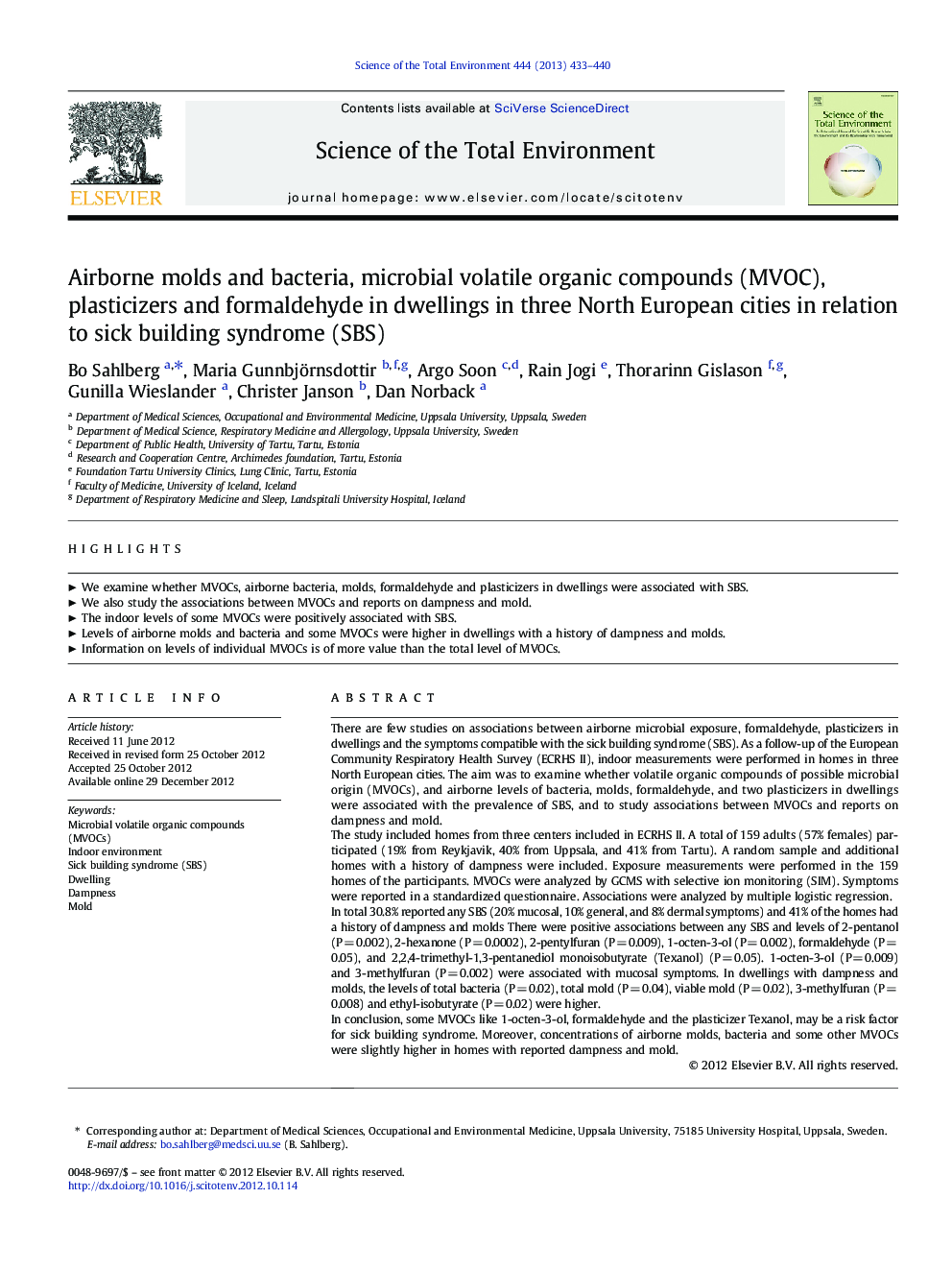| کد مقاله | کد نشریه | سال انتشار | مقاله انگلیسی | نسخه تمام متن |
|---|---|---|---|---|
| 4429083 | 1619809 | 2013 | 8 صفحه PDF | دانلود رایگان |

There are few studies on associations between airborne microbial exposure, formaldehyde, plasticizers in dwellings and the symptoms compatible with the sick building syndrome (SBS). As a follow-up of the European Community Respiratory Health Survey (ECRHS II), indoor measurements were performed in homes in three North European cities. The aim was to examine whether volatile organic compounds of possible microbial origin (MVOCs), and airborne levels of bacteria, molds, formaldehyde, and two plasticizers in dwellings were associated with the prevalence of SBS, and to study associations between MVOCs and reports on dampness and mold.The study included homes from three centers included in ECRHS II. A total of 159 adults (57% females) participated (19% from Reykjavik, 40% from Uppsala, and 41% from Tartu). A random sample and additional homes with a history of dampness were included. Exposure measurements were performed in the 159 homes of the participants. MVOCs were analyzed by GCMS with selective ion monitoring (SIM). Symptoms were reported in a standardized questionnaire. Associations were analyzed by multiple logistic regression.In total 30.8% reported any SBS (20% mucosal, 10% general, and 8% dermal symptoms) and 41% of the homes had a history of dampness and molds There were positive associations between any SBS and levels of 2-pentanol (P = 0.002), 2-hexanone (P = 0.0002), 2-pentylfuran (P = 0.009), 1-octen-3-ol (P = 0.002), formaldehyde (P = 0.05), and 2,2,4-trimethyl-1,3-pentanediol monoisobutyrate (Texanol) (P = 0.05). 1-octen-3-ol (P = 0.009) and 3-methylfuran (P = 0.002) were associated with mucosal symptoms. In dwellings with dampness and molds, the levels of total bacteria (P = 0.02), total mold (P = 0.04), viable mold (P = 0.02), 3-methylfuran (P = 0.008) and ethyl-isobutyrate (P = 0.02) were higher.In conclusion, some MVOCs like 1-octen-3-ol, formaldehyde and the plasticizer Texanol, may be a risk factor for sick building syndrome. Moreover, concentrations of airborne molds, bacteria and some other MVOCs were slightly higher in homes with reported dampness and mold.
► We examine whether MVOCs, airborne bacteria, molds, formaldehyde and plasticizers in dwellings were associated with SBS.
► We also study the associations between MVOCs and reports on dampness and mold.
► The indoor levels of some MVOCs were positively associated with SBS.
► Levels of airborne molds and bacteria and some MVOCs were higher in dwellings with a history of dampness and molds.
► Information on levels of individual MVOCs is of more value than the total level of MVOCs.
Journal: Science of The Total Environment - Volume 444, 1 February 2013, Pages 433–440